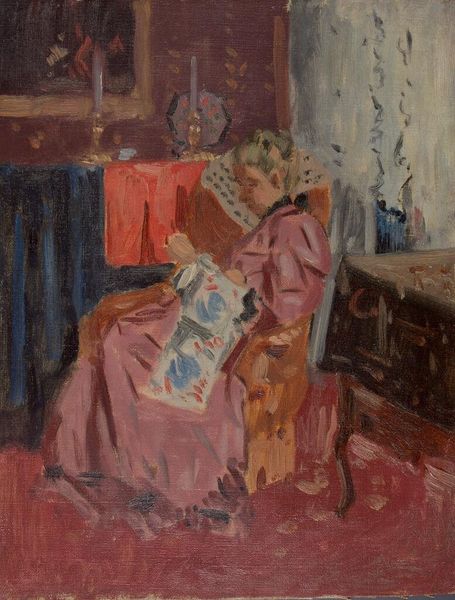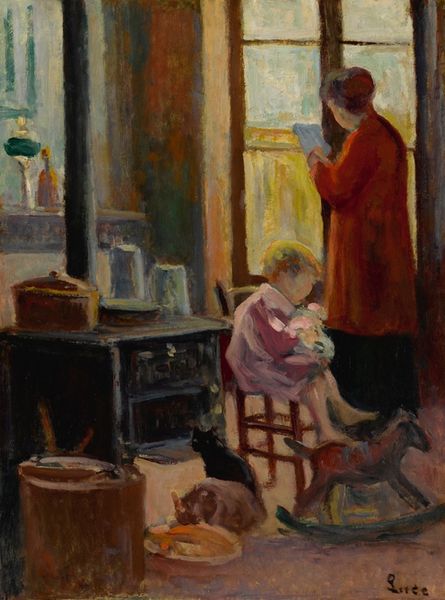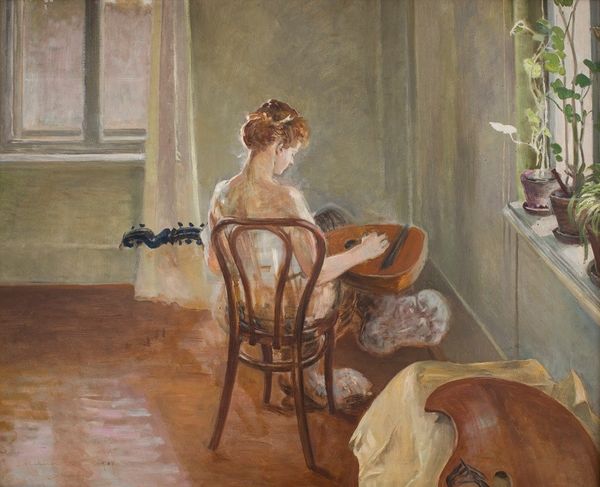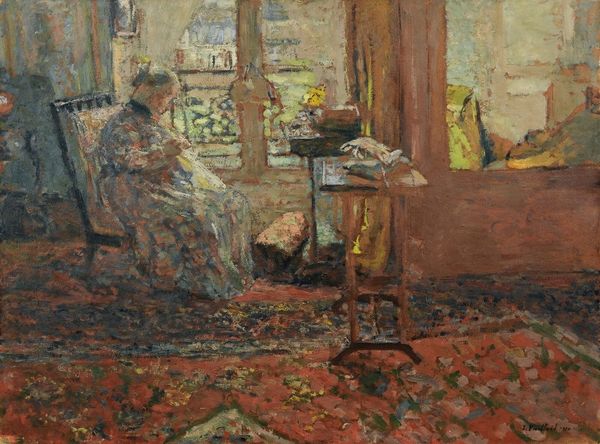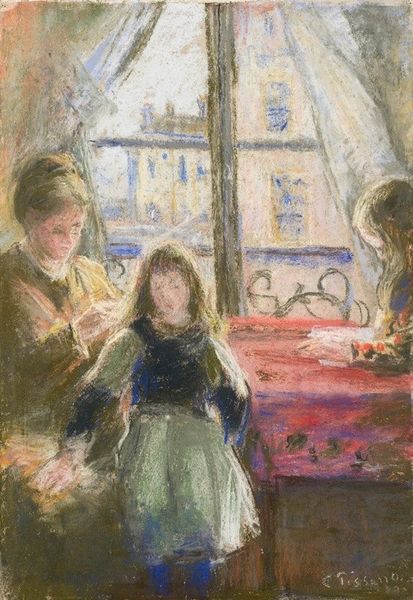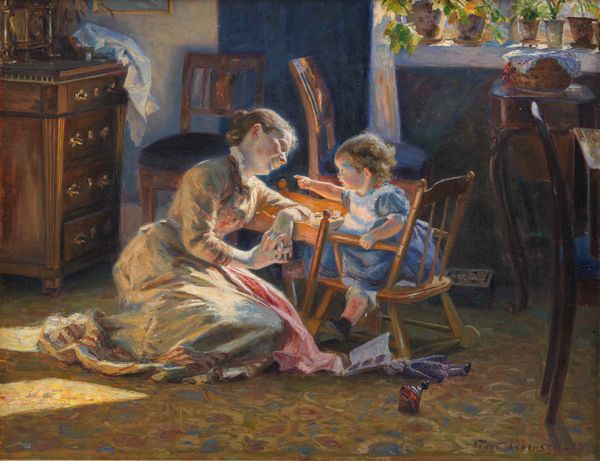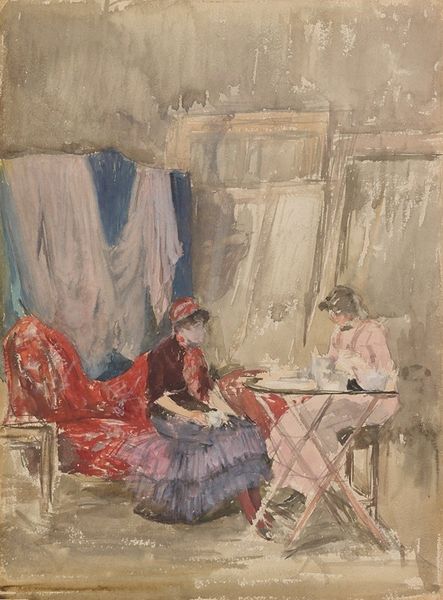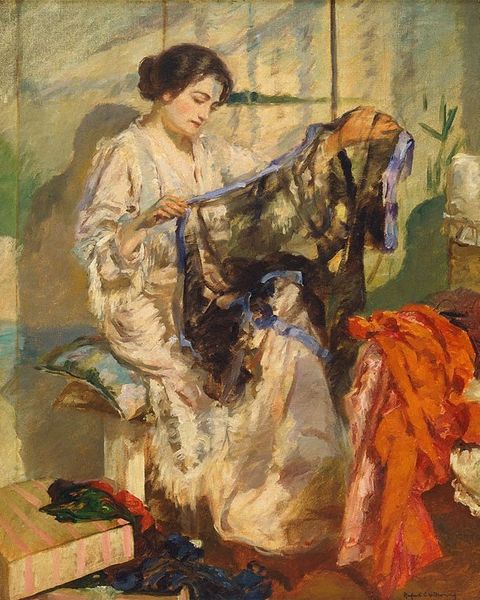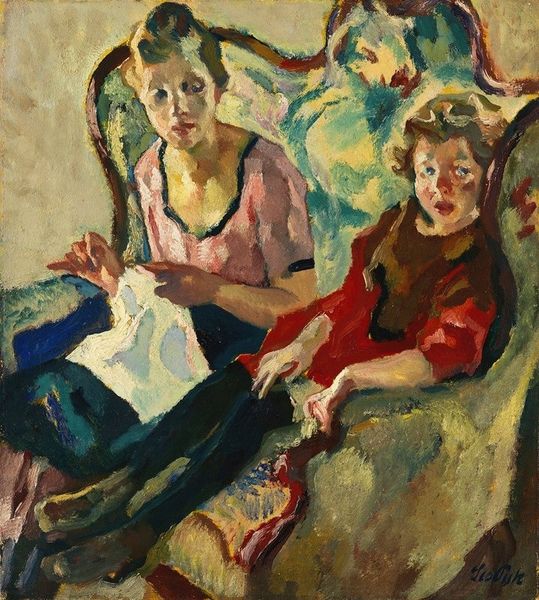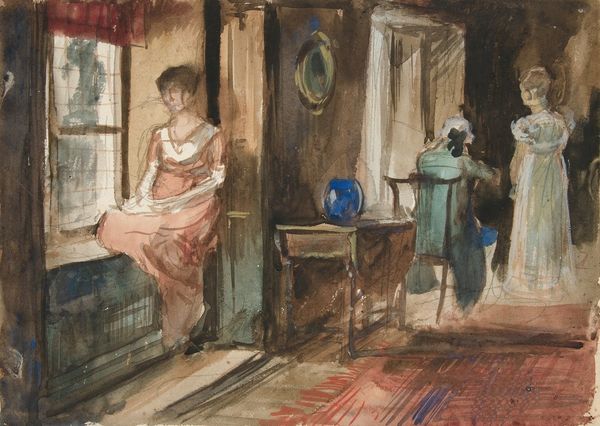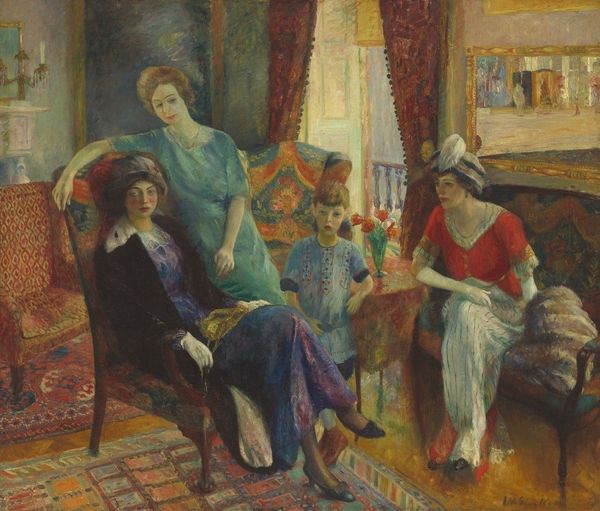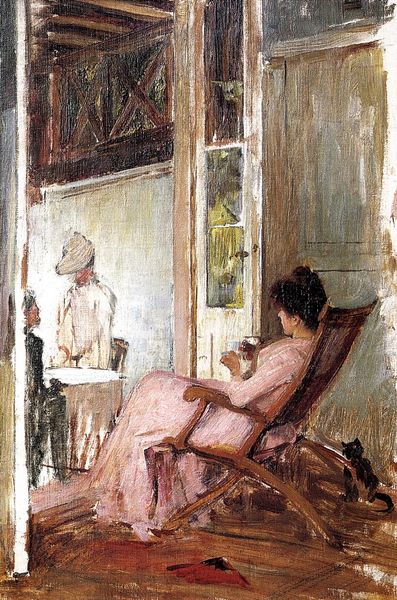
Copyright: Public Domain: Artvee
Editor: So, this is Henri Lebasque's "Marthe et Nono Cousant Dans Un Intérieur," painted around 1910, in oil on canvas. It feels so warm and intimate, like a glimpse into a private moment. What do you see when you look at it? Curator: I see a reflection of the growing bourgeois emphasis on domesticity during the early 20th century. Notice how the women are portrayed, not in dramatic poses, but engaged in common household activities? This shift is tied to a new public perception of women and childhood at the time. Editor: That’s interesting. How does Lebasque's technique contribute to that sense of domesticity? Curator: Well, the loose brushstrokes and soft colours, typical of Impressionism, create a gentle, inviting atmosphere. It also seems crucial to mention that "Intimism" really took off in this era. Does this "slice-of-life" image of two young women making something practical for their household seem political to you? Editor: Hmmm, I'm not sure... I hadn't considered it political before. More like a tender family portrait. Curator: But consider the public display of domestic skills and family harmony. Wouldn't you say that showing women at work reinforces or challenges specific social expectations? Editor: I suppose you're right. It could be interpreted as a reinforcement of traditional gender roles, but maybe also a celebration of the importance of domestic work that was so rarely portrayed until then. I see your point! Thanks for your time today! Curator: My pleasure! Examining art within a historical and social framework offers such enriching context for the artwork.
Comments
No comments
Be the first to comment and join the conversation on the ultimate creative platform.
